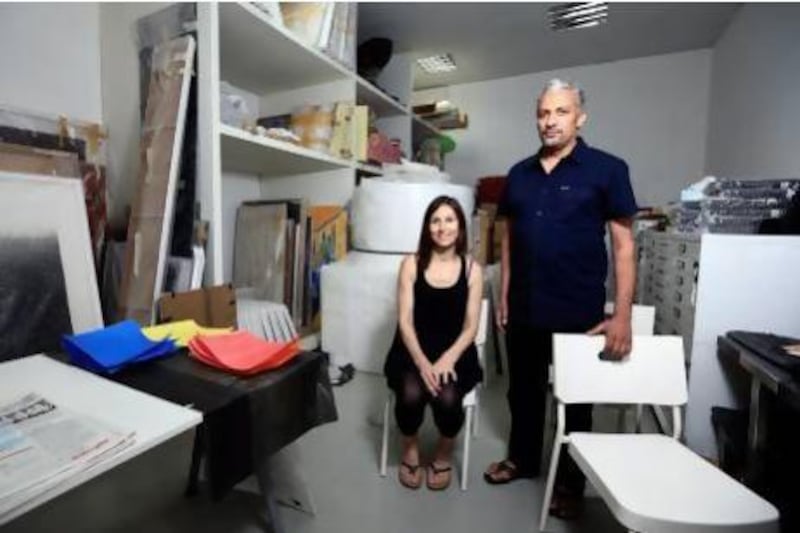Anyone familiar with Mohammed Kazem’s work will know that he does not like to be confined to a studio. Over the 30 years of his practice, he has incorporated music, painting, sculpture and performance art into his work and he has recently returned from Venice, where his UAE Pavilion solo show Walking on Water, a huge installation capturing images and sounds of the sea, drew 6,000 visitors over four days.
Nevertheless, his studio is an important place. In November 2011, in a warehouse a stone’s throw from the now-booming Alserkal Avenue in Al Quoz, Kazem opened Empty 10, a working studio and exhibition space that he shares with fellow artist Cristiana de Marchi.
Although they rarely collaborate, they come together on a daily basis to chew through ideas and formulate new ones, to create and occasionally put their work on display.
With Kazem now becoming more widely known, the studio is host to more and more visitors. The space is slowly morphing into a pseudo-gallery but Kazem is quick to point out that this was not the original intention. “Primarily the studio was a space where we could work and store our work and we structured it in a way where we had a space to show the works in progress,” he explains.
“At first it was very quiet but in the course of just one year, things changed very dramatically,” adds de Marchi.
The main event to set about that change was the announcement in September last year that Kazem alone would be representing his country at the Venice Biennale, the world’s most prestigious art event. However, six months before that, Art Dubai’s director Antonia Carver had put Empty 10 on the VIP programme for studio visits for the fair and Kazem was putting together a new body of work.
Although he is a prolific artist, Kazem had taken himself out of the exhibition circuit for some years, focusing on curating shows and supporting the younger generation. But to coincide with his re-emergence on the artistic scene and the Venice announcement, gallerists and curators began showing his work again and interest in his studio space picked up.
“Mohammed was curating for many years and didn’t have any major shows,” explains de Marchi. “People were losing the idea about what he was producing and so it was important to have a space to show the works he had been doing over the years. However, there were never any commercial intentions. Mohammed is an excellent mentor and apart from his personal use, he only ever wanted to use the space to support younger artists who are not yet known by the galleries here.”
So now, as the hype of Venice dies down and Kazem settles in for the long, hot summer, he uses the space to work on pieces such as his Scratches series – where he interprets the rhythm of music visually by making scratch marks on paper – or larger installations.
The space also holds a far more valuable purpose, he explains. It is a storage place for the thousands of newspaper articles and other material written about him since 1985 and also home to his irreplaceable hard drives.
“I learnt the technique of archiving from Hassan Sharif when he came back from England in 1984,” recalls Kazem. “He taught us how to collect and document all the material written about us and now I am one of very few artists in the UAE with a complete archive.”
The database, which is in digital and physical format, has allowed him to publish his own monograph, due for release later this year – and it has also become the subject of art itself. This year at Sikka Art Fair, the Dubai-based graphic collective Brusselssprout compiled his material in an installation titled The Archive of Mohammed Kazem, which filled an entire house in the Al Fahidi Historical Neighbourhood.
Despite the continued interest in his work and his growing status in the art world, Kazem remains refreshingly humble and focused on his work. “The studio allows me to be flexible and to experiment with different media and materials,” he says. “It is also somewhere that you can also be yourself and just focus.”
In that respect, de Marchi concludes, the studio is more than just a physical space. “It is really good feeling to have a space where you know you are keeping your works and you are developing your discourse but it is more than that, it changes your mental approach, knowing you can have a place to come together.”
[ aseaman@thenational.ae ]
Follow us
[ @LifeNationalUAE ]
And follow us on Facebook for discussions, entertainment, reviews, wellness and news.










